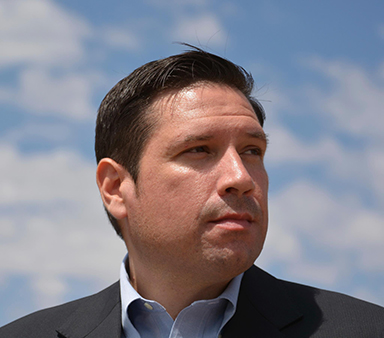Santa Fe Mayor Finds Economic Strength in Diversity
Date: April 25, 2017
Santa Fe’s mayor, Javier Gonzales, has made inclusivity a hallmark of his tenure. This extends to the immigrants who live in the city of 70,000 that he has governed since 2014. “Today, more than 14 percent of our population in Santa Fe is what we call new immigrants, which are recent arrivals,” he says. “We are a multicultural community that has demonstrated over time that it is diversity that really makes us stronger.”

Consider two of the most prominent job drivers for residents in the Santa Fe area — the hospitality industry and Los Alamos National Laboratory. In both, immigrants are vital to the continued success of U.S. operations. In the hospitality industry, nearly one in four workers in the state’s hotels and restaurants are foreign-born. They fill the low-skill jobs as housekeepers, cooks, dishwashers, groundskeepers. “The immigrant population is profoundly important,” the general manager of the Inn of the Governors in Santa Fe told the local newspaper. His industry colleague, a Santa Fe restaurant owner, added, “I don’t know how restaurants would be able to operate without them.”
We are a multicultural community that has demonstrated over time that it is diversity that really makes us stronger.
U.S.-born workers simply have more — and often better — employment options. In New Mexico’s Third Congressional District, which covers the northern half of the state and includes Santa Fe, the foreign-born are not only more likely to be of working age — 69.7 percent are between the ages of 25 and 64 compared with 50.1 percent of the U.S.-born — but they are also far more likely to have less than a high school education — 43.1 percent compared with just 12.3 percent of the U.S.-born. “Those workers fill in the gaps for us,” the Inn manager, Sam Gerberding, continued. “They do the jobs that we find others don’t want to do.”
Meanwhile, immigrants also fill critical high-skill positions. The foreign-born comprise more than one-fifth of practicing physicians in the state, for example, lessening the impact of a national physician shortage that’s particularly acute in rural areas. And, in a reflection of national trends, the foreign-born comprise more than one-third of New Mexico’s PhD students in science, technology, engineering, and math (STEM). They provide the expertise that’s needed to run scientific institutions like Los Alamos National Laboratory, a sprawling network of buildings and labs that provide jobs to 11,200 people in the Santa Fe region and tackles issues vital the national interest. Thanks to immigrants, says Gonzales, “We’re in a better position to confront some of the challenges that we have as a nation.”
Santa Fe, the oldest capital city in North America, has a history peppered with immigration stories, dating to the early 17th Century when Spanish conquistador Don Pedro de Peralta founded the city on a former Pueblo Indian site. Yet Gonzales is distressed to see that today some undocumented immigrants faithfully serve years as productive members of the community only to find that in the end no path exists to legalize their status. While Gonzales is committed to doing what he can at the local level to protect these residents, he says the federal government must acknowledge how vital immigrants are to the nation’s economy and initiate reform.
“I think the immigration system is broken because there has been a polarization of the conversation itself,” he says, adding that bipartisanship is key. “The way our country addresses the issue needs to be efficient and effective in documenting people that are living here peacefully.”
